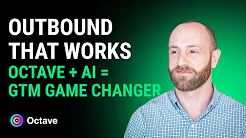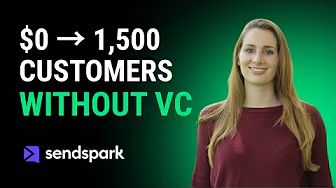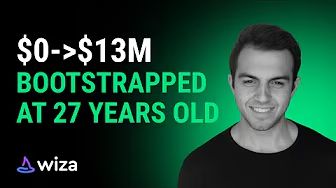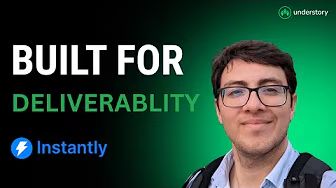
Understory Unfiltered: Octave’s GTM Engine - AI Agents, Contextual Messaging & 10% Reply Rates
Catch up on our Understory Unfiltered episode sharing how Octave’s game changing GTM engine

Learn how to optimize for and maintain a good CPM.
CPM is rising, squeezing reach and increasing acquisition costs. For SaaS growth teams managing paid media across multiple channels, every extra dollar spent per thousand impressions means fewer prospects entering your funnel, longer sales cycles, and higher CAC.
The pressure compounds when campaigns run in silos. Fragmented execution across paid media, outbound, and creative creates disconnected prospect experiences while driving costs up through internal competition and poor coordination.
To stay efficient, you need a clear understanding of CPM dynamics by channel, plus proven tactics to lower impression costs without sacrificing quality or downstream revenue. This guide explains the factors driving costs and provides step-by-step optimization strategies for profitable SaaS campaigns.
CPM measures the cost of earning 1000 ad impressions, providing helpful visibility into the impact of spending related to efforts including brand awareness, product launches, and retargeting campaigns. Once mastered and used in coordination with other key metrics, CPM becomes your early signal of budget inefficiency or confirmation that your ads are reaching the right buyers.
The calculation is straightforward. CPM = (Total Spend ÷ Impressions) × 1,000
For example, a $2,000 budget generating 400,000 impressions equals a $5 CPM.
Two variations can also provide a more granular view for SaaS marketers, effective and viewable CPM, explained below.
eCPM (Effective CPM): Converts CPC or CPA campaigns back into impression costs. This lets you compare LinkedIn lead gen with Google Display performance side by side.
If you spend $5,000 on a CPC campaign that generates 2,000 clicks and 500,000 impressions, your eCPM = ($5,000 ÷ 500,000) × 1,000 = $10. This lets you compare that $10 eCPM directly against a CPM campaign running at $8.
vCPM (Viewable CPM): Counts only impressions meeting MRC viewability standards. This is helpful when paying premium rates for high-quality SaaS buyer visibility.
If your campaign served 400,000 total impressions but only 280,000 met viewability standards (70% viewability rate), and you spent $2,000, your vCPM = ($2,000 ÷ 280,000) × 1,000 = $7.14. While your standard CPM was $5, your vCPM of $7.14 shows the true cost per viewable impression.
Both use the same base formula but tie spend more closely to effective or viewable impressions, giving a clearer view of true reach.
Most SaaS teams balance CPM, CPC, and CPA when allocating budgets. The table below clarifies when each metric is most effective to measure results and inform strategy.
| Campaign objective | Prioritize | Why it Wins | SaaS Considerations |
|---|---|---|---|
| Category education, thought leadership | CPM | Cheapest route to saturate target accounts | Weak signal on buying intent |
| Lead generation, content downloads | CPC | Pay only for engaged prospects | Rising costs can eliminate efficiency gains |
| Trial conversions, demo bookings | CPA | Budget ties directly to pipeline | Requires precise attribution and longer optimization cycles |
Because CPM bills per thousand impressions, small rate changes can quickly affect budgets. A $2 increase in professional targeting can exhaust six-figure campaigns weeks early, forcing you to either reduce reach or reallocate budget mid-quarter when neither option is ideal.
Benchmark CPM across platforms, campaigns, and creative initiatives. For instance:
Track CPM weekly, not monthly. Waiting 30 days to notice a 40% cost increase means you've already wasted weeks of budget on inefficient delivery. Understanding where CPM stands across channels helps you allocate budget strategically and set realistic performance expectations.
When planning yearly media budgets, one truth stands out: your most efficient channel mix depends entirely on CPM. Platform pricing gaps have widened sharply, and the wrong allocation can derail growth fast. Here's a benchmark of current rates across common channels and what they can mean for your reach strategy.
Meta remains the go-to for scalable reach, though CPM costs continue rising as advertiser competition increases on both Facebook and Instagram.
Friday CPMs peak, so front-loading spend earlier in the week can reduce costs by a few percentage points. Q4 holiday competition inflates rates further, making Q2–Q3 ideal for prospecting and Q4 for retargeting and conversions. Smart growth teams shift 60-70% of new audience budget to Q2-Q3 when CPMs can be 20-30% lower, then use Q4 budget exclusively for retargeting prospects already in the funnel.
Google's ecosystem shows the widest pricing spread of any channel.
SaaS teams running mid-funnel video campaigns should prioritize early-week or pre-holiday flights for stronger efficiency.
LinkedIn remains the premium B2B environment, with CPM rates significantly higher than consumer-focused platforms due to professional targeting capabilities and limited inventory. Higher costs reflect narrow targeting, verified firmographics, and limited inventory. Despite the expense, these impressions pay off for SaaS with long sales cycles when sequencing is smart.
Expanding to look-alike segments can trim costs without losing quality. The mistake most teams make is starting with overly narrow targeting (VP of Sales at 500+ employee SaaS companies in North America), which can drive CPMs up 40-60% compared to slightly broader audiences that LinkedIn's algorithm can optimize. Start broader, let the platform learn, then narrow based on conversion data rather than assumptions.
Emerging platforms still undercut Meta pricing.
These platforms reward real-time relevance, helping SaaS marketers capture efficient impressions during low-competition periods.
A "good" CPM in 2025 depends less on hitting a universal number and more on matching channel costs to your SaaS buying cycle and pipeline velocity goals.
For SaaS growth teams, here's how to think about channel allocation:
LinkedIn delivers precision over volume. Higher CPMs make sense when you're targeting VP-level decision-makers at specific companies with $50K+ ACVs. The qualified pipeline from 10,000 highly targeted impressions often outperforms 100,000 cheaper impressions that miss your ICP.
Tip: Use LinkedIn for account-based plays, product launches to existing customers, and late-stage nurture campaigns where message consistency matters more than reach.
Meta scales awareness efficiently. Mid-range CPMs work for broader audience building, retargeting website visitors, and testing new messaging before committing budget to premium channels. Meta excels at reaching buyers early in their research phase and keeping your brand visible during long B2B consideration cycles.
Tip: Deploy Meta when you need steady impression volume to support pipeline development over quarters, not weeks.
Google captures active intent. Display CPMs trade lower costs for broader reach, while Search CPMs reflect high buyer intent. For SaaS teams, Google works best when prospects already know their problem and are comparing solutions.
Tip: Use Display for competitive conquesting and awareness, and prioritize Search when conversion rates justify higher costs.
Emerging platforms offer arbitrage opportunities. TikTok, Reddit, and similar channels reward early movers with lower CPMs before competition intensifies. The goal is capturing efficient impressions before pricing reaches Meta parity.
Tip: Test these platforms with limited budget when targeting technical audiences (Reddit) or building brand awareness with younger buyers (TikTok).
Three principles for smart channel allocation:
The most successful SaaS growth teams treat CPM as one input in a broader efficiency equation. They coordinate paid media, outbound, and creative to deliver consistent messaging across touchpoints while managing impression costs strategically by channel and campaign stage.
While these channel dynamics explain why CPM varies, there are controllable factors that impact whether your costs stay competitive or spiral upward.
SaaS growth teams often face pricing volatility that drains strategic budgets. When LinkedIn and display campaigns chase the same decision-makers or creatives go stale due to missed refreshes, costs rise fast. These coordination gaps directly affect seven core levers that determine CPM.
Understanding these levers matters because small changes compound quickly. A 15% CPM increase that goes unnoticed for three weeks can consume an extra $45,000 on a $1M annual budget.
Below are example problems and solutions for each factor that can impact CPM. Monitor these factors weekly to catch inefficiencies before they become budget problems.
Overlapping campaigns from the same brand can inflate CPMs during high-intent periods when auctions tighten.
The problem: When different teams target the same audience segments, like "US CTOs at SaaS firms, 200–500 employees," platform algorithms detect internal competition and raise bid prices.
The fix: Audit active campaigns monthly for audience overlap. Most ad platforms flag this in account diagnostics, but teams miss it because they're optimizing campaigns in isolation rather than reviewing portfolio-wide targeting. Consolidating overlapping audiences into a single campaign with multiple ad sets can immediately reduce CPM.
Siloed teams often over-segment by job title or company size, missing broader lookalikes that convert just as effectively. Broader or Advantage+ audiences usually achieve lower CPMs and stronger reach by letting algorithms optimize prospect discovery across similar profiles.
The problem: Creating 15 separate ad sets for "Director of Marketing," "VP of Marketing," "CMO," and similar titles forces higher bids for limited inventory.
The fix: A single "Marketing Leadership" audience can deliver lower CPMs with comparable conversion rates because platforms can optimize across larger pools and identify profiles that actually convert.
Without shared creative strategy, teams overspend on premium formats. For instance, video placements on YouTube can cost twice as much as static display, even when engagement doesn't justify the lift.
The problem: One team runs expensive video campaigns while another runs static ads with identical messaging to the same accounts, wasting premium spend.
The fix: Map creative formats to buyer journey stages: static for awareness, video for engaged prospects, premium interactive for decision makers. This sequencing can reduce blended CPM by 15-25% while improving conversions. Coordinating creative choices across Feed, Reels, and Stories reduces redundancy and strengthens engagement.
When each specialist optimizes in isolation, timing mismatches waste spend. Coordinated pacing, such as shifting budgets to lower-cost periods before major holidays, helps stabilize CPMs while maintaining consistency across channels.
The problem: Uncoordinated day-parting creates scattered impression patterns, such as heavy LinkedIn exposure Monday-Wednesday, Meta ads mid-week, display retargeting Friday. Prospects experience disconnected messaging rather than coherent sequences.
The fix: Teams that align impression timing across channels can see 10-15% better conversion rates from consistent multi-touch experiences.
Platforms use predictive systems to serve ads where conversion likelihood is highest. Conflicting campaigns from separate teams can force these systems to compete internally, raising floor prices. Centralized placement planning lets AI models work synergistically across campaigns.
The problem: When one team runs "Automatic Placements" while another targets the same accounts with "Feed Only" restrictions, algorithms receive contradictory instructions and may resolve conflicts through higher bids, resulting in a higher CPM.
The fix: Coordinate placement strategies across teams to let algorithms optimize holistically rather than fight internal contradictions.
Uncoordinated budget increases trigger algorithmic resets and temporary cost spikes. Gradual scaling keeps learning phases stable and CPMs predictable.
The problem: Doubling campaign budgets overnight forces platforms to restart learning phases, potentially spiking CPMs 30-50% for 7-14 days.
The fix: Increase budgets by 20% weekly instead of 100% at once. Even better: redirect scale toward retargeting prospects already engaged through other channels, which often scales more efficiently than cold prospecting.
Aging creative assets are one of the fastest ways to lose relevance and raise costs.
The problem: When teams or freelancers miss refresh cycles, ad fatigue sets in.
The fix: Rotating assets every two to three weeks typically restores engagement and lowers CPMs more effectively than bid tweaks.
SaaS leaders who coordinate targeting, creative, and pacing across teams gain control over these levers. Teams that treat CPM as a passive metric that "just happens" watch costs creep up quarter over quarter. Teams that actively manage these seven factors maintain stable or declining CPMs even as market competition increases.
Knowing which levers to pull is half the battle. The other half is executing the right optimizations in the right sequence.
SaaS growth teams often lose time and budget coordinating between paid media specialists, outbound teams, and creative freelancers, while prospects experience fragmented messaging and rising impression costs. This framework simplifies the loop of auditing, testing, and documenting performance to remove coordination overhead and regain pricing control.
The timeline matters. Teams that implement these steps see measurable CPM reduction within 7-10 days and sustained improvement over the following quarter. The key is systematic execution, not sporadic optimization.
Implementation timeline:
Here's how to execute each step:
Begin by reviewing platform quality metrics such as Meta's relevance diagnostics, Google's ad strength, and viewability reports.
Algorithms penalize weak engagement and stale creative, pushing CPM higher. While ad copy and design contribute to engagement, technical and optimization issues often drive cost escalations. Flag ad sets with CTRs dropping below historical averages or relevance scores under 6/10 for immediate refresh.
Over-segmentation and overlapping audiences increase internal competition and distort performance visibility. When multiple ad sets chase the same narrow segment, auction costs rise.
Consolidate redundant ad sets into broader Advantage+ audiences and let platform algorithms identify lower-cost, high-conversion traffic pockets. This improves delivery efficiency without sacrificing audience quality.
For B2B SaaS specifically, resist the urge to create separate campaigns for every job title. A campaign targeting "Marketing Decision Makers" performs better and costs less than five separate campaigns for CMO, VP Marketing, Director of Marketing, Marketing Manager, and Head of Growth, even though they seem different. Platforms optimize across similar audiences more effectively than you can manually.
Ad fatigue typically sets in within two weeks. Introducing fresh creatives weekly helps sustain relevance and lower impression costs.
Maintain one control creative and test two new variants each week. After 72 hours, retain the better-performing version and iterate. This rhythm prevents the gradual cost creep that comes from stale content.
Restricting campaigns to single placements, such as feeds only, increases bid pressure.
Opening placements through Advantage+ testing can reveal lower-cost inventory across Stories, Reels, Marketplace, or in-stream video. Cap ad frequency at 3–4 impressions per user in awareness campaigns; beyond this point, incremental reach drops while CPM rises.
Auction dynamics fluctuate by hour and day. Automated bidding can improve efficiency, but timing strategies must align with performance data, not assumptions.
Use automated rules to scale bids down when win rates exceed forecasts, and up when conversion probabilities rise. For Google Display, schedule bids around consistent troughs and seasonal surges to balance efficiency and exposure.
Machine learning models such as Meta's Advantage+ and Google's Performance Max optimize bids, placements, and creative delivery in real time. Though AI-managed campaigns may show slightly higher CPMs, they often yield better conversion efficiency.
Run manual and AI-driven campaigns in parallel for two weeks, then shift budget toward the approach delivering the lower cost per qualified session.
Many SaaS growth leaders resist algorithmic bidding because they want control. The reality: platforms process billions of auction signals per second that no human team can match. The key when embracing AI bidding is to also maintain rigorous attribution. The control comes from setting proper conversion tracking and guardrails, not from manual bid adjustments.
Track every change, targeting, creative, bid rule, or placement, in a central changelog mirrored within the ad platform.
Monitor three daily metrics for all affected ad sets: impression cost, CTR, and CPA.
If impression costs fall but CPA rises, roll back changes immediately. Establish review cadences: daily for the first week post-change, then weekly once performance stabilizes.
Following this loop typically delivers measurable CPM reduction within the first week and sustained CPA improvement over the next quarter.
Lowering CPM without sacrificing quality requires orchestrating every touchpoint, tracking every metric, and coordinating cross-functional execution. Understory's allbound approach eliminates the coordination overhead consuming strategic time for SaaS growth leaders.
Understory coordinates strategic paid media management across LinkedIn, Meta, Google, and Reddit with Clay-powered outbound and professional creative services. This approach ensures consistent messaging across all prospect touchpoints while managing impression costs strategically by channel and campaign stage.
Understory helps SaaS growth teams control CPM through:
Stop letting disconnected campaigns drive up costs. See how coordinated paid media, outbound, and creative expertise eliminates specialist management overhead while controlling CPM and boosting pipeline velocity. Schedule a demo today.

Catch up on our Understory Unfiltered episode sharing how Octave’s game changing GTM engine

Catch up on our Understory Unfiltered episode sharing how SendSpark scaled personalized video with AI

Catch up on our Understory Unfiltered episode sharing how WIZA generated $13M ARR without any venture capital

Catch up on our Understory Unfiltered episode sharing how we helped a brand scale to 35K+ customers